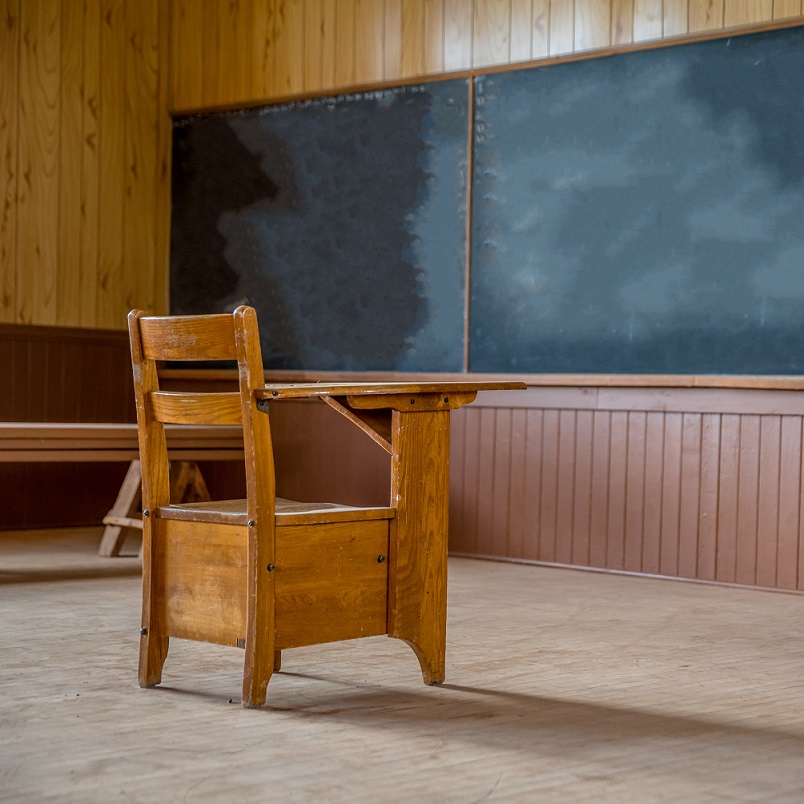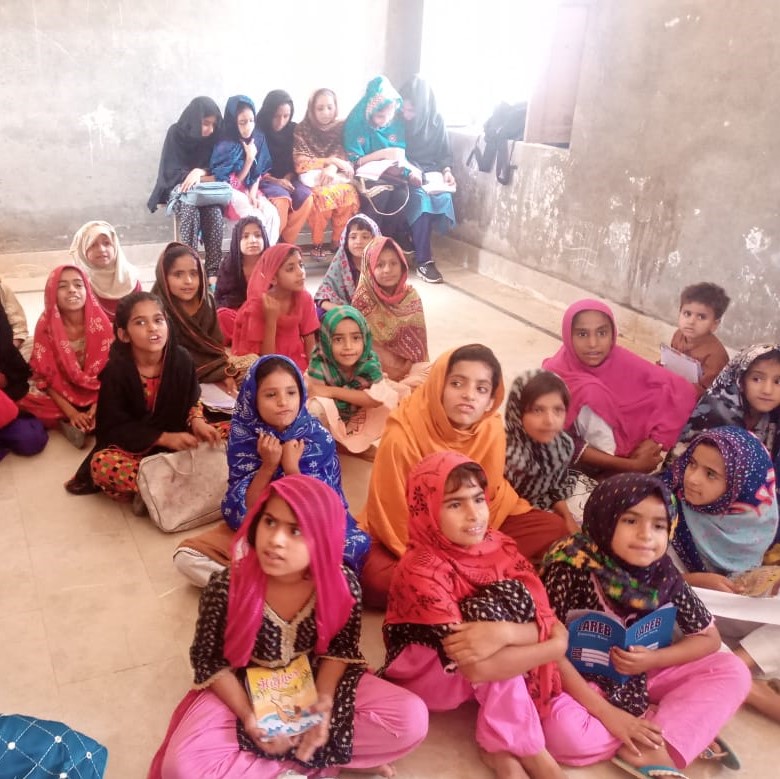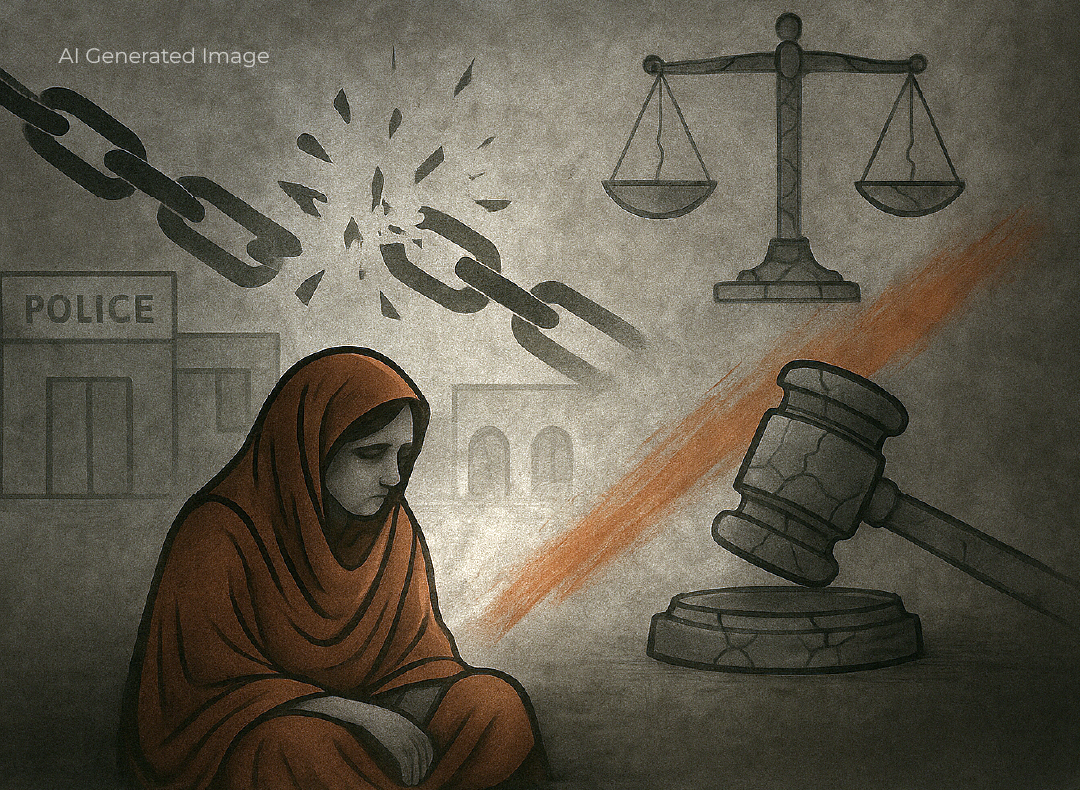Rashid Memon, an 11-year-old student in grade 7 at Government High School Qasimabad in Hyderabad, Sindh, does not have the prescribed textbooks. Many students like him attend school without books, causing hindrance to their education. When they request books from their teachers, they are told that the books have not arrived yet and will be distributed to everyone once they arrive.
Rashid’s father, Rizwan Memon, works at a hotel and earns only 900 rupees a day, barely enough to feed his family of five. The textbooks for grade 7 are available in the market for 1,784 rupees, and the notebooks cost an additional 900 rupees. Therefore, Rashid’s father cannot afford to help in this matter.
Amina Mirbahar is a student in grade 8 at Girls High School Tando Jam. She is also facing the issue of not receiving textbooks from the school.
The absence of textbooks hinders her ability to complete her schoolwork. The school administration has not provided information about when the textbooks will be available, so she has asked her parents to buy them from the market.

It has been over a month since the end of the summer vacation, but many students in Sindh attend government schools with empty bags. This situation is causing frustration not only for the students but also for their parents and teachers.
According to the established procedure, the Sindh Textbook Board provides the required textbooks for government schools every year. However, this time, many children are still without textbooks.
The Sindh Textbook Board has been functioning since 1971, with Dr Nabi Bakhsh Qazi as the first chairman. The primary purpose of this institution is to publish educational books from first to twelfth grade.
Mahmood Chohan, the leader of the Government Secondary Teachers Association (GSTA) Hyderabad division, says that it is the responsibility of the Textbook Board to supply educational textbooks to schools. However, only 25 per cent of the required textbooks have been provided to government schools.
He explains that the academic session ends in March, but many children have not received textbooks. Although all textbooks are in PDF format on the education department’s website, this does not solve the problem.

Chohan mentions that a GSTA meeting is scheduled in a few days, and after that, they will discuss the issue with the Textbook Board. If the provision of textbooks is not ensured, they will prepare a plan for protest.
Under the Sindh Free and Compulsory Education Act 2013, children aged 5 to 16 are entitled to free education. No child is supposed to pay any fees or expenses to attend school.
After the 18th constitutional amendment, Sindh provided free textbooks to schools for the first time. Initially, free textbooks were provided for girls up to the fifth grade; later, all students were given free textbooks up to the tenth grade.
According to the Pakistan Alliance for Math and Science report, in 2021, 44 per cent of children aged 5 to 16 in Sindh were out of school. Approximately 6.5 million children are deprived of education in the province. The lack of textbooks further exacerbates this issue.
Saddam Jarwar teaches at a primary school in Mirpur Khas district, specifically in Dighri. He says that out of 400 students in his school, only 100 have received textbooks. The rest are waiting for their turn.

He explains that some teachers have purchased books from the market for a few students, but providing textbooks to everyone in this way is not feasible. The school has not received science and general knowledge textbooks yet.
Sindh has more than 36,000 primary and 4,000 post-primary schools, including high schools. The Sindh Textbook Board, under the Department of Education, is responsible for printing textbooks for over 41 million children. These books are distributed to 40,635 schools.
The Textbook Board has the resources and infrastructure to print many books, and it does not rely on individual efforts. Therefore, the Board issues tenders for printing and gets the work done through the market. This arrangement also fulfils the needs of private schools.
The Sindh Textbook Board holds the Education Department responsible for the lack of textbook distribution. The Chairman of the Board, Agha Sahil, explains that the Textbook Board had a target of printing books for 41.60 million children, which has been achieved.
Also Read

Lost Hopes: Colleges in Mianwali struggle with critical faculty shortages, impacting students’ futures
He states that the Board had delivered the syllabus books to the Warehouses by the end of July. The distribution of these books falls under the responsibility of the Education Department. The problem is not a shortage of books but rather the ineffective distribution.
The officials in the Education Department disagree with the Chairman of the Textbook Board on the distribution issue. They claim that there is a shortfall in the number of books printed.
Former Secretary of Education Akbar Laghari and Fauzia Khan, an advisor to the Curriculum Wing of the Education Department, refused to comment on this matter. Even the provincial Education Minister has avoided discussing this issue.
However, Ahmed Din Mirani, the Director of Education for Hyderabad Region, claims that there has been an increase in the number of students in schools. Last year, there was a 15 per cent increase in student enrollment compared to the previous year, resulting in a textbook shortage.
He explains that a committee of district education officers has conducted surveys of all Warehouses. Some Warehouses do not have the required books, and the Deputy Commissioners have written letters to the Board. It is hoped that the shortage of books will be resolved soon.
Sajid Sindhi, a publisher in Hyderabad, believes that the rising cost of paper has affected the printing of books. Last year, a ream of paper cost 1,300 rupees, which has increased to 3,000 rupees. To print books in larger quantities, institutions need to increase their budgets.
Published on 14 Sep 2023




















